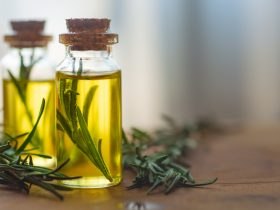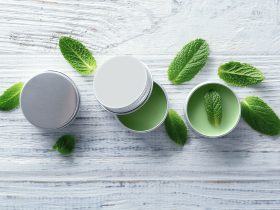Everyone desires bright, white teeth, as discolored teeth can lead to embarrassment or other concerns. Fortunately, there are natural methods available to achieve teeth whitening, although several factors influence tooth color.
Despite maintaining good oral hygiene habits like regular brushing, some individuals may still experience tooth staining due to drinking coffee, tea, or smoking. Yellow or brown stains on teeth may also indicate underlying issues such as gum disease, enamel erosion, or poor dental hygiene.
It’s essential to recognize that simply whitening teeth does not necessarily protect against cavities or oral diseases like gingivitis. While white teeth are desirable, it’s important to maintain perspective on overall oral health.
As explained by a dentist contributing to Dentistry IQ, the belief that whiter teeth equate to healthier teeth is a misconception. Tooth color does not necessarily reflect dental health, yet consumer perception often links white teeth with a healthy mouth, despite the reality being different.
The good news is, for those seeking natural teeth whitening methods while enhancing oral hygiene, there are effective options available.
Utilizing specific toothpaste, regular brushing and flossing, incorporating baking soda and coconut oil pulling into your routine, and following a tooth-healthy diet can naturally whiten teeth while providing additional benefits such as antibacterial and antiseptic protection.
- Try Coconut Oil Pulling
Just when you thought you’d heard everything about coconut oil, here’s another revelation: coconut oil pulling may act as a natural teeth whitener.
Many individuals claim that their teeth have become visibly whiter and healthier after incorporating coconut oil into their oral care routine, with oil pulling receiving particular praise for its effectiveness.
To practice oil pulling, simply place a spoonful of coconut oil in your mouth and swish it between your teeth for five to 20 minutes, or add a few drops to your toothbrush and apply it directly. Another option is to rub coconut oil onto your teeth using a clean washcloth.
An added benefit of coconut oil pulling? Coconut oil possesses antimicrobial properties, making it an excellent choice for both cleaning and protecting your gums.
A study highlighted in the Journal of Contemporary Dental Hygiene concluded, “Edible oil-pulling therapy is natural, safe, and has no side effects. Hence, it can be considered as a preventive therapy at home to maintain oral hygiene.”
Similarly, a study conducted in 2020 yielded comparable results, suggesting that oil pulling with coconut oil may have a positive impact on oral health and dental hygiene.
- Rub Your Teeth with Apple Cider Vinegar
Utilizing apple cider vinegar (ACV), known for its natural antibiotic and teeth/gum cleansing properties, to eliminate stubborn teeth stains seems like a logical step.
ACV proves particularly effective in removing stains caused by common offenders like coffee and nicotine (from smoking). This is even one of the main reasons to quit drinking caffeine, and, more importantly, quit smoking.
Many individuals claim that after using ACV, their teeth appear as if they’ve just received a professional cleaning.
So, what’s the secret behind ACV’s effectiveness? It contains compounds such as acetic acid, potassium, magnesium, probiotics, and enzymes, which not only combat harmful bacteria but also promote the growth of beneficial probiotic bacteria.
Thanks to its natural acidity, ACV aids in breaking down plaque and other substances adhered to the teeth. The pH of apple cider vinegar contributes to stain removal, resulting in naturally whiter teeth.
Consistency is key when using ACV for teeth whitening. It’s recommended to use it continuously for at least a month to achieve optimal results. However, caution is advised, as excessive use or vigorous brushing with ACV can potentially erode tooth enamel.
After brushing with ACV, it’s essential to follow up with regular toothpaste, preferably a non-fluoride variant, or thoroughly rinse your mouth.
To apply ACV for teeth whitening, simply rub it onto your teeth using your finger for about a minute. Then, rinse your mouth with water or a hydrogen peroxide rinse to neutralize the acidity.
- Brush Your Teeth After Every Meal or Drink
To naturally brighten your smile, consider brushing your teeth with suitable toothpaste after eating or drinking, although this may not always be convenient.
While it requires consistency and dedication, it’s an effective method for teeth whitening.
You can experiment with homemade toothpaste recipes, such as:
- DIY Probiotic Toothpaste
- DIY Remineralizing Toothpaste
- DIY Baking Soda Toothpaste
Furthermore, avoiding smoking and excessive consumption of coffee, soda, or other staining beverages, improving overall oral hygiene practices, and maintaining a balanced diet can all help prevent tooth discoloration. If you frequently indulge in staining substances, using a straw can reduce direct contact with your teeth and minimize staining.
While most foods don’t stain teeth, habitual coffee drinking or smoking can lead to discoloration over time due to enamel thinning or staining. In such cases, scheduling dental cleanings every three months may be helpful, along with trying out natural remedies like those mentioned above.
- Try Brushing with Activated Charcoal
Activated charcoal, renowned for its absorbent properties that trap toxins within the body, has garnered attention for its potential to whiten teeth by absorbing plaque and microscopic particles responsible for staining.
Curious about how to naturally whiten teeth with charcoal? Here’s a simple method:
- Wet your toothbrush and dip it into powdered activated charcoal.
- Brush your teeth as usual, paying extra attention to areas with noticeable staining.
- Take a sip of water, swish it around your mouth thoroughly, and then spit it out.
- Rinse your mouth well until the spit is clear.
For optimal results, incorporate activated charcoal into your teeth-brushing routine two to three times a week. However, it’s advisable to avoid using charcoal if you have crowns, caps, or porcelain veneers to prevent any potential damage.
- Use Strawberries and Other Healthy Foods
It’s rumored that some celebrities turn to healthy foods like strawberries for teeth whitening – a surprising revelation indeed!
Model Tyra Banks even demonstrated this tooth-whitening trick on her show. She simply mashed up four or five strawberries and applied the mixture to her teeth, then thoroughly rinsed afterward.
Berries, including strawberries, are packed with beneficial antioxidants and other compounds that can contribute to dental health.
While their exact role in teeth whitening may be linked to the overall benefits of a healthy diet for dental health, one study suggests that the acidic content in strawberries can help lighten stains by reducing pH levels to 3 or 4.
In addition to strawberries, there are several other foods that can help maintain strong gums and teeth while preventing diseases and signs of aging.
These include teeth-strengthening foods such as nuts, yogurt, cheeses, lean proteins, carrots, celery, leafy greens, black and green tea, and apples. Incorporating these foods into your diet can contribute to a healthy and radiant smile.
The Risks of Using Teeth Whitening Products
Research has indicated that conventional teeth-whitening products can pose risks to dental health by causing excessive enamel removal. These products, including whitening strips and gels, often contain carbamide peroxide as the active ingredient, which breaks down into hydrogen peroxide and urea.
Regular use of whitening strips has been associated with enamel erosion and heightened tooth sensitivity, particularly when exposed to hot or cold liquids and acidic foods.
Dentists affiliated with the American Academy of Cosmetic Dentistry emphasize the safety of professional dental whitening products, as well as most over-the-counter options. However, acidic whitening products may increase the risk of decay if overused.
While many individuals desire whiter teeth, some may develop an unhealthy obsession with whitening, leading to overuse of whitening strips. Doctors warn against excessive bleaching, citing potential damage to tooth tissues and enamel erosion, resulting in a translucent or unnatural appearance.
It’s crucial to use whitening strips in moderation, preferably after exploring natural methods for dental care. Teeth bleaching products should only be used under the supervision of a dentist, as whitening treatments may offer temporary results with potential long-term risks.
The most effective approach to whitening teeth involves consuming a diet rich in nutritious foods, prioritizing daily oral hygiene practices such as brushing and rinsing, and minimizing consumption of staining substances like coffee, tea, and sugary foods.
Above all, individuals should prioritize oral health by quitting smoking, if applicable, and using a natural, non-irritating toothpaste for daily brushing, regardless of age.
Key Takeaways
In conclusion, the discoloration of teeth, often manifesting as yellow or brown hues, can be attributed to various factors such as aging, enamel thinning, poor dietary habits, consumption of staining substances like coffee or tea, smoking, and experiencing dry mouth.
It’s important to note that teeth-whitening products, while promising to enhance dental aesthetics, may pose risks to dental health by causing excessive enamel removal.
Constant use of whitening strips, in particular, has been associated with enamel erosion and adverse effects on dental well-being. Therefore, it is advisable to avoid this method of teeth whitening.
So, how can you safely whiten your teeth? Natural approaches that promote dental health while minimizing the risk of enamel damage include coconut oil pulling, maintaining a nutritious diet, practicing regular brushing and flossing, ensuring adequate hydration, and considering the use of activated charcoal.
By incorporating these safe and natural methods into your oral care routine, you can achieve a brighter smile while safeguarding the integrity of your tooth enamel.
















Find Us on Socials